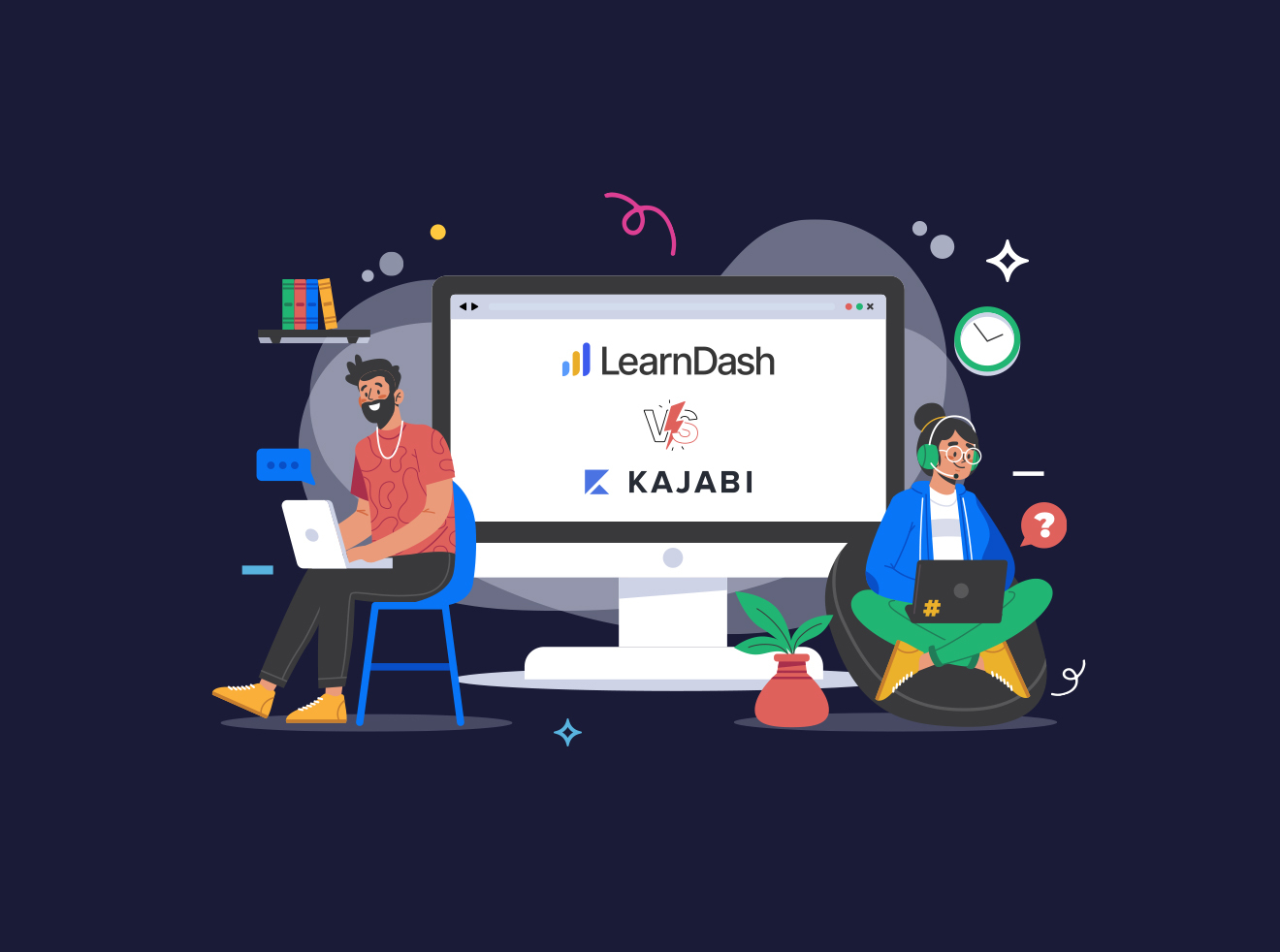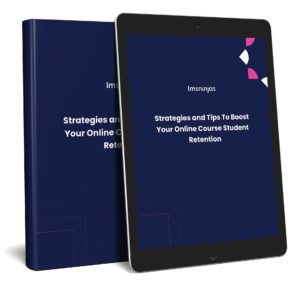Are you considering teaching languages online? In the past, language learning was often confined to conventional classroom settings, limiting students’ exposure and overall experience.
Now, with the emergence of Learning Management Systems (LMS) tailored for language education, the possibilities have expanded exponentially. These LMS platforms offer a dynamic and interactive approach to language instruction, making the learning process engaging, enjoyable, and effective.
Advantages of eLearning for Language Acquisition

- Global Connectivity and Cultural Exchange:
eLearning has transformed language acquisition into a gateway for global connectivity. Learners can interact with peers from different cultures, bridging gaps and breaking down barriers. Engaging in conversations with native speakers allows students to gain firsthand exposure to authentic language usage, colloquialisms, and cultural nuances, all while making friends across borders.
- Flexibility and Convenience:
Gone are the days of rigid schedules and fixed locations. eLearning empowers language enthusiasts with the freedom to learn at their own pace and convenience. Whether you’re a busy professional, a student with a packed timetable, or someone juggling multiple responsibilities, you can access learning materials whenever and wherever suits you best. This flexibility ensures that language learning can seamlessly integrate into your lifestyle, making it easier to stay committed and motivated.
- Interactive Multimedia Learning:
Traditional language learning methods often involve repetitive exercises and monotonous drills, leaving learners uninspired. With eLearning, the experience takes a 180-degree turn. LMS platforms incorporate various interactive multimedia elements like videos, audio clips, quizzes, and games, making learning enjoyable and effective. Visual and auditory stimulation enhance comprehension and retention, transforming the learning journey into an exciting adventure.

- Personalized Learning Pathways:
Every learner is unique, and eLearning recognizes this by offering personalized learning pathways. LMS platforms leverage data-driven insights to assess each student’s strengths and weaknesses, enabling educators to tailor lessons to individual needs. This adaptive approach maximizes the impact of learning, ensuring that students progress at their own pace while focusing on areas that require more attention.
- Real-Time Feedback and Assessment:
Language learners often seek timely feedback on their progress to gauge their development accurately. In the realm of eLearning, this has become a reality. Through LMS platforms, learners receive immediate feedback on exercises and assessments, allowing them to identify areas that need improvement. This instant feedback fosters continuous learning and empowers students to address challenges proactively.
Identifying Key Features for Language Learning
When it comes to language learning, identifying key features is essential for effective and efficient learning.
Course Management and Organization
An LMS empowers language instructors to effortlessly manage and organize their courses. With intuitive course creation tools, educators can arrange lesson plans, modules, and resources in a logical sequence.
This ensures a smooth and structured learning journey for students, making it easy for them to access and navigate the course material at their own pace.
Additionally, the LMS allows instructors to update content and make real-time changes, keeping the learning experience fresh and dynamic.
Multimedia Integration for Interactive Learning
Gone are the days of monotonous language lectures. With an LMS, language instructors can inject life into their virtual classrooms by seamlessly integrating multimedia elements.
Engaging videos, interactive quizzes, podcasts, and virtual simulations bring language learning to life, captivating students and encouraging active participation.
By incorporating diverse multimedia, educators cater to various learning styles, ensuring an inclusive and enjoyable learning experience.
Progress Tracking and Assessment Tools
Effectively tracking learners’ progress is paramount to their language learning success. An LMS comes equipped with comprehensive progress tracking and assessment tools.
These insightful features enable educators to monitor individual performance, identify strengths and weaknesses, and tailor personalized learning paths.
Regular assessments and quizzes provide immediate feedback to students, fostering a sense of accomplishment and motivating them to excel further.
Communication and Collaboration Features
Language learning thrives on interaction and communication. An LMS serves as a vibrant virtual community, connecting learners from diverse backgrounds and geographical locations.
Students can engage in meaningful conversations, practice language skills, and exchange cultural insights through discussion forums, live chat, and video conferencing. Moreover, collaborative group projects promote teamwork, enhancing students’ interpersonal skills while reinforcing their language abilities.
Incorporating a powerful LMS into language instruction revolutionizes how we teach and learn languages online. The key features discussed above – efficient course management, interactive multimedia integration, robust progress tracking, and seamless communication – combine to create a dynamic and stimulating eLearning environment.
Leveraging these features as a language educator opens up exciting opportunities for students to embark on an enriching language-learning journey. Embracing technology and embracing an LMS can elevate language learning to new heights, making the process not only effective but also enjoyable and inspiring for learners worldwide.
Designing Effective Language Courses with an LMS
Teaching languages online has evolved into a captivating and efficient process, thanks to the power of Learning Management Systems. Here are some tips for designing a more efficient Language Course with an LMS.
Structuring Language Curricula: Beginner to Advanced Levels
When it comes to language learning, a well-structured curriculum is the backbone of success. Through your LMS, you can carefully plan and organize courses catering to learners of all levels, from enthusiastic beginners to seasoned polyglots.
Begin with a solid foundation of essential vocabulary and grammar for beginners, gradually progressing to more complex topics and conversational skills for intermediate learners.
Finally, challenge advanced learners with thought-provoking discussions and advanced reading materials. By offering a comprehensive language learning path, you ensure that learners stay engaged and motivated to reach their linguistic goals.
Incorporating Listening, Speaking, Reading, and Writing Activities
Effective language learning isn’t just about memorizing vocabulary lists but immersion and practice. Leverage your LMS to integrate a diverse range of activities that cover all aspects of language learning: listening, speaking, reading, and writing.
Utilize audio and video resources for listening exercises, interactive speaking sessions, reading comprehension quizzes, and writing assignments. With a mix of multimedia and interactive tasks, you create an engaging learning experience that feels more like an adventure than a chore.
Gamification and Incentives for Learner Engagement
Who said learning can’t be fun? Gamification is the key to unlocking your learners’ potential and keeping them excited about their progress. Implement interactive quizzes, language games, and challenges through your LMS. Create a points system or award badges to recognize and celebrate learners’ achievements.
Additionally, set up friendly competitions or virtual language exchange opportunities where learners can practice with native speakers of the language they’re learning. By making language learning enjoyable and rewarding, you foster a sense of camaraderie and enthusiasm among your students.
Ensuring Flexibility for Self-Paced and Instructor-Led Courses
Every learner is unique, and so are their learning preferences. With an LMS, you have the flexibility to offer self-paced courses for independent learners or instructor-led courses for those who thrive in a guided environment. Self-paced courses empower learners to study at their own pace, review challenging concepts, and take ownership of their learning journey.
On the other hand, instructor-led courses offer regular check-ins, personalized feedback, and a sense of community. By providing both options, you accommodate different learning styles and ensure that all learners can flourish in your language courses.
By structuring language curricula, incorporating interactive activities, gamifying the learning experience, and offering flexible course formats, educators can create language courses that are truly engaging and effective.
Understanding the Importance of User Experience
When it comes to teaching languages online, creating a positive user experience is paramount to ensure the success of eLearning endeavors. An intuitive navigation and user-friendly interface, mobile responsiveness, multi-language support, and accessibility considerations are pivotal in providing an exciting and inclusive learning environment.
Intuitive Navigation and User-Friendly Interface
The first step in enhancing user experience is ensuring learners can effortlessly navigate the online language learning platform. An intuitive interface with clear menus and well-organized content allows learners to find the information they need without frustration.
By streamlining the learning process, students can focus on acquiring new language skills, leading to a more engaging and productive experience.
Mobile Responsiveness for Learning On-the-Go
In today’s fast-paced world, learners are constantly on the move. Hence, the importance of mobile responsiveness in online language learning cannot be overstated. When an LMS is optimized for mobile devices, students can access lessons, exercises, and assessments anytime, anywhere.
Whether they’re commuting to work, waiting in line, or taking a break at the park, mobile-friendly eLearning enables continuous language practice and knowledge retention, making the learning process fun and convenient.
Multi-language Support for Diverse Learners
Language learners come from diverse backgrounds and have varied linguistic preferences. Therefore, incorporating multi-language support within the LMS is a powerful tool for attracting and retaining a wide range of students. By offering content in multiple languages, learners can grasp concepts more easily and confidently. Additionally, providing multilingual resources fosters inclusivity, ensuring every student feels welcome and valued in the language learning community.
Accessibility Considerations for Inclusive Learning
Inclusive learning should be a fundamental principle in any language teaching approach. Online language learning platforms should be accessible to individuals with disabilities or special needs. By integrating features such as screen reader compatibility, closed captioning for videos, and adjustable font sizes, language instructors can create a more inclusive and diverse eLearning experience. Ensuring accessibility promotes equal opportunities for language learners and reflects a commitment to fostering an environment that celebrates differences.
Understanding the importance of user experience is essential when venturing into the world of online language teaching. An LMS that prioritizes intuitive navigation, mobile responsiveness, multi-language support, and accessibility creates an exciting and engaging eLearning environment.
Integrating Technology for Language Immersion
Real-time Language Practice with Chatbots and AI-driven Tools:
Say goodbye to monotonous drills and hello to interactive language practice! Incorporating chatbots and AI-driven tools in language teaching allows learners to practice speaking, listening, and writing in real-time. These smart assistants simulate conversations, creating a dynamic environment for students to refine their language skills.
Imagine learners conversing with virtual native speakers and receiving instant pronunciation, grammar, and vocabulary feedback. These AI-driven tools adapt to individual learning styles, ensuring a personalized and effective learning experience. Students will be thrilled to witness their progress and gain the confidence to engage in real-world conversations.
Leveraging Social Media and Language Exchange Platforms
In today’s interconnected world, social media and language exchange platforms are treasure troves for language learners. As an educator, you can leverage these platforms to foster a sense of community among your students. Encourage them to interact with native speakers or other language enthusiasts, providing them with authentic language exposure.
Platforms like Facebook groups, language-specific forums, and language exchange apps enable students to share their knowledge, cultural experiences, and language insights. They can engage in discussions and debates and even find language exchange partners to practice with. This social aspect of language learning creates excitement, as learners get to connect with people from different corners of the world while improving their language skills.
Encouraging Peer-to-Peer Interaction and Feedback
Language learning should not be a solitary endeavor. Within the LMS, promote peer-to-peer interaction and feedback to foster a collaborative learning environment. Group activities, language challenges, and team projects encourage students to communicate with one another in the target language.
Interacting with their peers gives learners diverse perspectives and insights into cultural nuances, making language learning more enriching and enjoyable. Furthermore, encourage students to provide constructive feedback to their classmates. This promotes a culture of mutual support and enables learners to identify areas for improvement, ultimately boosting their language proficiency.
By integrating chatbots and AI-driven tools, harnessing the power of social media and language exchange platforms, and fostering peer-to-peer interaction, educators can create a vibrant and engaging language learning experience.
Monetization and Marketing Strategies
Choosing the Right Pricing Model
As you embark on your journey of teaching languages online, one crucial aspect to consider is choosing the right pricing model. Your pricing strategy can significantly impact the success of your eLearning venture. To boost your online course sales, striking the right balance between value and affordability is essential.
- Freemium Approach: One effective way to attract learners is by offering a freemium model. Provide a basic version of your language course for free, allowing learners to get a taste of your teaching style and content quality. This strategy can entice them to upgrade to a paid plan for access to more advanced lessons, personalized feedback, or additional resources.
- Tiered Pricing: Create different pricing tiers tailored to learners’ needs. Offer a “Starter” package for beginners, a “Standard” package for intermediate learners, and an “Advanced” package for those seeking in-depth language mastery. This approach gives learners the flexibility to choose the level of commitment that aligns with their goals.
Promoting Language Courses Effectively
Once you have your pricing model in place, the next step is to focus on effective promotion. Remember, your eLearning course may be fantastic, but it won’t matter if no one knows about it. Embrace these marketing strategies to spread the word and get learners excited about your language courses:
- Engaging Content Marketing: Develop high-quality content related to language learning, such as blogs, infographics, and videos. Offer valuable language tips, cultural insights, and success stories to build a loyal community around your brand. Engaging content will attract potential learners and position you as an authority in the language education niche.
- Collaborations and Influencer Marketing: Partner with influencers or well-known language enthusiasts to promote your courses. Influencers can bring in a broader audience and add credibility to your offerings. Consider organizing webinars, guest lectures, or joint events to expand your reach and connect with learners across various platforms.
Leveraging Email Marketing and Social Media Campaigns
- Email Campaigns: Don’t underestimate the power of email marketing. Build an email list by offering valuable lead magnets, such as free language learning guides or sample lessons. Send regular newsletters with course updates, success stories, and exclusive offers to keep your audience engaged and excited about your language courses.
- Vibrant Social Media Presence: Social media platforms are goldmines for reaching potential learners. Maintain an active and vibrant presence on platforms like Facebook, Instagram, Twitter, and LinkedIn. Post engaging content regularly, interact with your audience and use language learning challenges or quizzes to spark interest and participation.
- Video Marketing: Embrace the popularity of video content to showcase your teaching methods and create a connection with your audience. Record short, captivating videos featuring language learning tips, student testimonials, and snippets of your course content. Engaging videos can go viral and drive more traffic to your website.
Venturing into teaching languages online, a well-thought-out monetization and marketing strategy is essential for success. By choosing the right pricing model, promoting your courses effectively, and leveraging email marketing and social media campaigns, you can create a buzz around your eLearning courses and attract enthusiastic learners from around the globe.
Building Your Language School Site with an LMS
Choosing the Right LMS and Hosting Solution
When it comes to teaching languages online, having a robust Learning Management System (LMS) is key to your success! With numerous options available, selecting the right LMS and hosting solution is vital for a seamless and effective eLearning experience.
Excitingly, there are LMS platforms specifically designed to cater to language schools. Look for features like multilingual support, interactive lessons, and comprehensive assessment tools. Ensure the LMS allows for easy content creation and smooth student progress tracking.
Choosing the ideal hosting solution is equally important. Opt for a reliable hosting provider with fast servers to ensure quick access to your language course content. With the right LMS and hosting, you’re on your way to building a dynamic online language school! Some of the platforms our clients have worked with when teaching languages online include LearnDash LMS, LifterLMS, and TutorLMS.
Domain and Website Setup for Language School Branding
Now that you have your perfect LMS, it’s time to make your language school stand out with a captivating website! Securing a unique domain name that reflects your brand is the first step. Get creative and choose a name that’s memorable and easy to spell. Excite potential students even before they explore your website!
Next, set up your website using a user-friendly platform that complements your LMS. Organize your content in a way that makes navigation a breeze, allowing students to find courses and resources effortlessly.
Regarding branding, let your language school’s personality shine through! Incorporate vibrant colors, engaging images, and appealing graphics. Your website should convey a sense of excitement and adventure, making students eager to learn languages with you!
Customizing the LMS to Match Your Language School’s Style
With your LMS and website set up, it’s time to take customization to the next level! Infuse your language school’s style into the LMS to create a cohesive eLearning environment.
Start by designing a captivating homepage that showcases what makes your language courses special. Feature student testimonials, captivating course previews, and clear calls to action to enroll. Remember, an enthusiastic and welcoming homepage will leave a lasting impression!
Personalization is the key to an exciting eLearning experience. Customize course layouts, lesson formats, and even interactive elements to align with your language school’s unique teaching approach. When students feel engaged and valued, their language-learning journey becomes thrilling!
Don’t forget to incorporate multimedia elements like videos, audio clips, and interactive exercises. These will make learning enjoyable and cater to different learning styles, making your online language courses even more accessible.
Teaching Languages Online
In conclusion, teaching languages online through a powerful LMS has transformed language education, offering global connectivity, flexibility, and personalized learning pathways. Building an e-learning website with the right hosting solution and customizing the LMS elevates the eLearning experience. Embrace technology, leverage social media, and adopt interactive tools to create engaging language courses. Join the eLearning revolution and unlock the potential of language acquisition. Happy teaching, and start your exciting language journey today!




